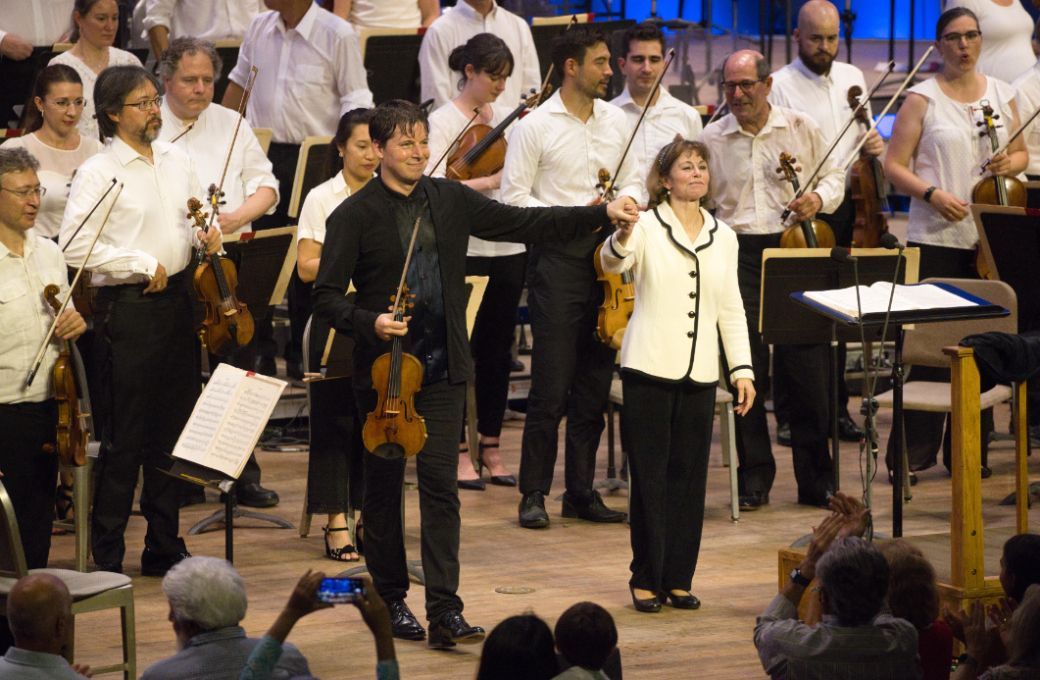This summer at Tanglewood, the Boston Symphony Orchestra has made it a practice to have the composers of the contemporary pieces that open the programs – many of them premieres – present to say a few words. Since some of these works have been high concept, the introductions have been a boon to the listener. Often the composer’s personality is reflected in the work as well as the concept, adding an extra level of accessibility. Though Roberto Sierra’s Fandangos for orchestra was not a premiere, the composer’s ebullient and colorful introduction, calling his piece "a handshake with the 18th century" and admitting that he is "a little crazy" just like the Antonio Soler fandango which inspired him, paved the way for a more immediate appreciation of the performance.

Another fandango by Luigi Boccherini also peeks around the corner from time to time, but it’s the insistent triple meter of the Soler which knits together the colorfully orchestrated episodes that follow, calling things back to order when the variations go astray. Given the fandango’s ostinato quality, there is more than a hint of Ravel’s Bolero here, however crossbred with La Valse. There is no uninterrupted build-up until the final pages of the score. Instead the variations peter out, disintegrate into dissonance or descend into complete chaos. JoAnn Falletta, making her BSO debut, led a brash, high-spirited performance, embracing all the craziness.
Recent soloists appearing with the BSO have completely rethought their approach to Tchaikovsky’s Violin Concerto. Anne-Sophie Mutter was the last to offer a thought-provoking and masterful take; Joshua Bell continued in that vein with a performance marked by incisive attacks, refined dynamics and an elastic approach to tempo. The broad phrasing and tempo of the violin’s entrance set the tone for an interpretation marked by its intimacy, shading and originality. Where others might blaze through the first movement – almost a concerto within the concerto – Bell took his time, extending more than 20 minutes. When he did pick up the tempo, as he did towards the end, the effect was electric. The same goes for any louder passages, which stand out thanks to the softer dynamics prevailing. None of this was willful or self-indulgent but in the service of expressing an overall emotional arc. Falletta and the orchestra followed his lead, and the audience rose in an unprecedented standing ovation at the conclusion of the movement. There was nothing anticlimactic to what followed either, since the remaining two movements proved to be equally absorbing, heartfelt and searching. It’s hard to make an old warhorse run like the thoroughbred it once was. In this case, Bell and Falletta achieved just that.
The evening closed on a colorful note equal to the one which opened it with kaleidoscopic performances of two of the most evocative pieces of scene painting in the repertory: The Fountains of Rome and The Pines of Rome by Respighi. The music reflects the nature of the four fountains and their unique flow of water: the twin giant goblets of the Valle Giulia built in 1911 for the Universal Exposition, with their gentle overflow falling to the basin below; Bernini’s modest Triton fountain with the demigod blowing his conch shell, the source of the fountain’s generous cascade; the Trevi with its baroque allegory providing a narrative; and the large red granite ancient Roman basin of the Villa Medici with its modest bubbler in the middle. Like the first fountain in the series a gentle overflow falls into a pool below. Since the pines are inert, Respighi limns vignettes of the activities which take or took place under and around them, from the play of children to the hymns of the first Christians and a Roman triumph processing down the Appian Way.
Falletta drew straightforward and sensitive readings that avoided the bombast of more routine approaches. She painted the flow of water and surrounding scenes with the varying colors of the sun, which traces its course from the quiet of sunrise to the repose of sunset. Those more contemplative soundscapes were in sharp contrast to the high drama, lively activity and spectacle with which she imbued the four pine-studded settings. The overwhelming effect of the Appian Way procession was magnified by placing a brass choir on the floor of the shed to the left. The program ended it as had begun with an insistent beat building to a titanic climax.


